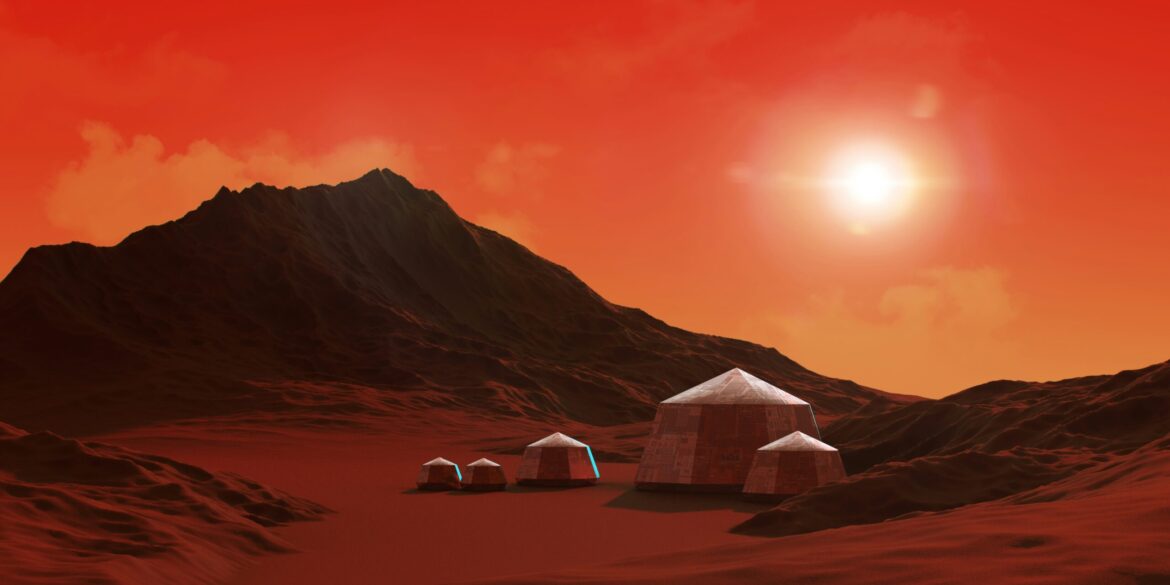NASA has announced an accelerated timeline for its highly anticipated Mars mission, with potential launches slated as early as next year. This bold decision follows the U.S. administration’s proposed budget, which underscores the national priority of landing a human on Mars, signaling a major shift in the space agency’s approach to planetary exploration and human spaceflight. With the stakes higher than ever, NASA is pushing ahead with its mission to reach the Red Planet, and the race to send astronauts to Mars is intensifying.
A Strategic Push for Human Exploration of Mars
The Mars mission has long been one of NASA’s most ambitious objectives, involving not just complex technological advancements but also international collaboration, private sector involvement, and a significant investment of resources. NASA’s decision to accelerate the timeline comes in response to the growing urgency to meet the U.S. government’s long-term goal of achieving a human landing on Mars, which has been set as a major milestone for American space exploration in the coming decades.
NASA’s Administrator, Bill Nelson, expressed excitement about the accelerated timeline, stating, “This is a giant leap toward the future of human spaceflight. We are on the brink of a new era of exploration, and by fast-tracking this mission, we are demonstrating our unwavering commitment to expanding humanity’s footprint beyond Earth.” The proposed Mars mission aims to send astronauts to the planet’s surface, paving the way for future missions that would involve long-term colonization and sustainable life on Mars.
The mission’s core objective is to explore the feasibility of human survival on Mars, where conditions are drastically different from Earth. Mars has a thin atmosphere, extreme temperatures, and high radiation levels, posing significant challenges to human habitation. Researchers will need to develop technologies that address these obstacles, including life support systems, sustainable habitats, and reliable methods for sourcing water and oxygen.
The Role of SpaceX in the Mars Mission
One of the most significant aspects of NASA’s accelerated Mars mission is the involvement of private companies, particularly SpaceX. Founded by Elon Musk, SpaceX has played a pivotal role in NASA’s plans, contributing both technological expertise and resources that could dramatically improve the speed and efficiency of space missions.
SpaceX’s Starship program is particularly noteworthy, as it is designed for long-duration flights and is a key player in NASA’s Mars mission strategy. In a recent statement, Musk confirmed that SpaceX’s Starship, which has been under development for several years, is on track for its first uncrewed test flights. Starship’s design is intended to transport large numbers of astronauts, as well as the necessary equipment, to the Martian surface. SpaceX plans to land a rocket on Mars, which could serve as a crucial component for NASA’s efforts to send humans to the planet.
Elon Musk has long been vocal about his vision of establishing a human presence on Mars, and his company’s technological advances have made this vision increasingly achievable. SpaceX’s reusable rocket technology has significantly lowered the cost of space travel, and the company’s involvement is expected to reduce the financial burden on NASA, making the Mars mission more feasible.
NASA’s collaboration with SpaceX is seen as a critical factor in meeting the tight schedule for a potential crewed mission to Mars. The partnership is expected to lead to breakthroughs in rocket design, landing technology, and resource management, all of which are vital for any future human presence on Mars.
International Partnerships and Technological Challenges
In addition to collaborating with private companies, NASA is working with several international space agencies, including the European Space Agency (ESA) and Roscosmos, the Russian space agency. These partnerships will enable NASA to share resources, research, and technological advancements, creating a more comprehensive approach to the Mars mission. International collaboration will be vital, as sending humans to Mars is a monumental task that requires pooling of expertise and funding from multiple sources.
As NASA moves forward, scientists and engineers face a variety of technological hurdles. Chief among them is the challenge of developing sustainable life support systems that can function for extended periods on Mars. This includes developing methods for producing oxygen, growing food, and recycling water in a harsh, resource-scarce environment. NASA’s Jet Propulsion Laboratory is already working on prototypes of these systems, which will be tested on the International Space Station (ISS) before being deployed to Mars.
Another significant challenge is the need to protect astronauts from the high levels of radiation present on Mars. Unlike Earth, Mars does not have a protective magnetic field or thick atmosphere to shield against solar radiation and cosmic rays. Researchers are exploring various methods, such as radiation-shielded habitats and protective space suits, to mitigate these risks.
The Path Ahead: A Long-Term Vision for Mars Exploration
NASA’s acceleration of its Mars mission timeline is a clear reflection of the agency’s commitment to leading the world in human space exploration. With a goal to land astronauts on Mars by the late 2030s or early 2040s, the agency has now set an ambitious pace that aligns with the broader vision of making Mars a destination for future generations of explorers.
The timeline for human spaceflight to Mars, while expedited, still involves rigorous testing and development. NASA’s Artemis program, which aims to return astronauts to the Moon by 2024 as a stepping stone for Mars, is a key part of this strategy. By building a sustainable presence on the Moon, NASA hopes to test crucial technologies and strategies that will be directly applicable to Mars exploration. The lessons learned from Artemis will provide invaluable insights for the complex, multi-year mission that will take astronauts to Mars.
In the coming months, NASA will continue to refine its plans, develop new technologies, and collaborate with key partners to ensure the success of its Mars mission. The accelerated timeline is a testament to the urgency and excitement surrounding human space exploration, marking a new chapter in NASA’s ambitious goals for the future.
As the mission progresses, the world will watch closely to see if NASA can meet its bold timeline and achieve one of humanity’s greatest challenges: a successful human landing on Mars.
For updates on NASA’s Mars mission and other space exploration initiatives, visit NASA’s Mars Exploration Page.

